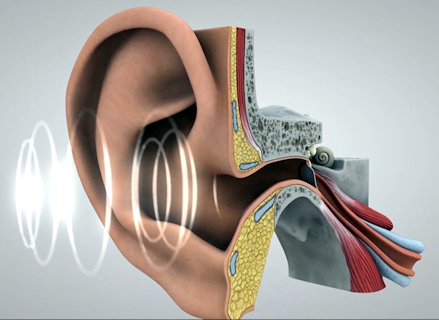Waves
In technical discussions of sound, the word that often accompanies “sound” is “wave,” as in “sound wave.” A wave is a repetitive oscillation in some property, such as pressure in the air, or depth in water. Perhaps the most familiar waves are water waves. At any specific location on the surface of water, a wave will cause the surface to rise and fall as the wave passes. This means that the depth of the water increases and then decreases. What a water wave looks like when viewed from the side is illustrated in the following video, which is a view through the side of an aquarium as waves move past.

–
The up-and-down undulations of the water resemble a stretched-out version of the graph of the electronically generated sound displayed earlier and repeated below.
–
Instead of undulations in depth, this graph involves undulations in pressure. The resemblance between water waves and pressure variations in sound is more than just an accident. The behavior of water waves and sound have much in common. Many features of sound can be appreciated more fully, and other features discovered, when sound is described in terms of waves. For this reason, in what follows we will be looking into some general properties of waves and the language used to describe them. Some of this language we have already used, but much will be new.
A wave is an oscillation that travels through some medium. The medium may be a solid, a liquid, a gas, or even empty space. The oscillation is in some property of the medium. For example, a wave in water can take the form of an oscillation in the depth of the water. Light waves are oscillations in an electromagnetic field that travels through space. A sound wave is an oscillation in the pressure of the air.
